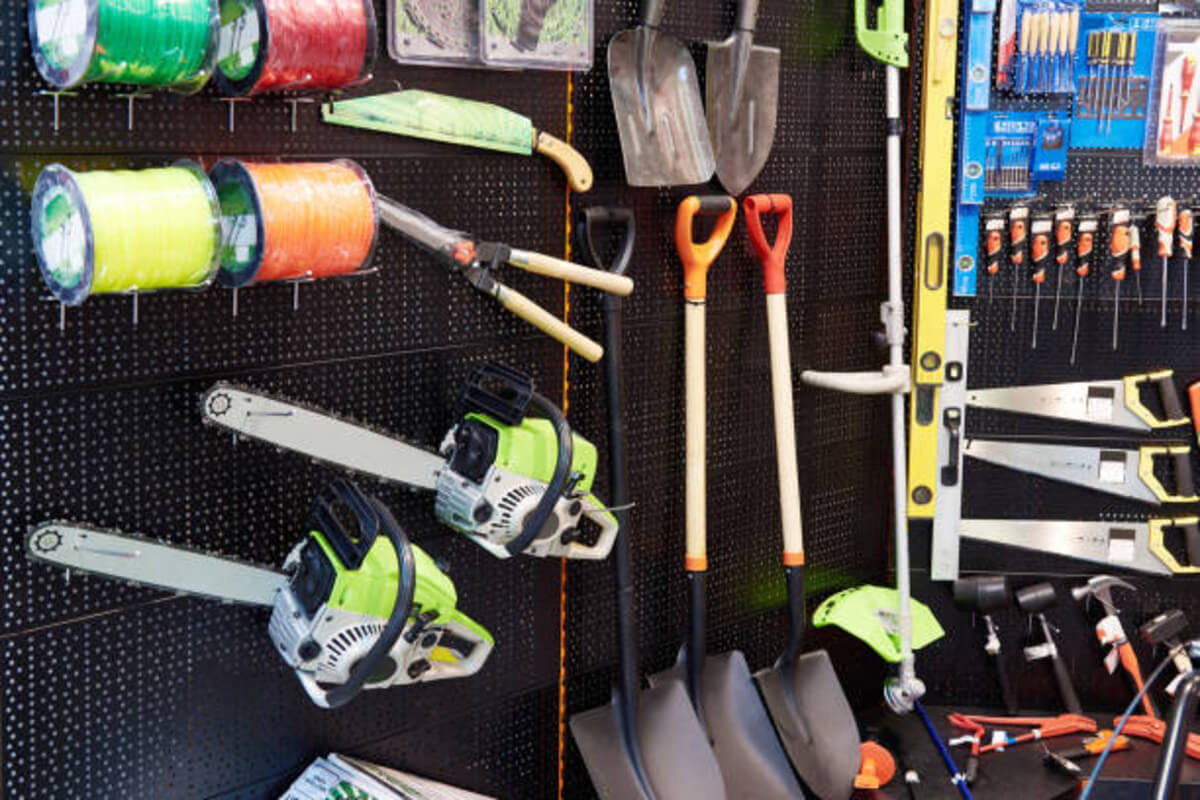Popular Farm Tools and Equipment
Regardless of the type of agriculture one conducts, farm tools and equipment are among the important agricultural inputs to have on the farm. We provide a large selection of farm tools, including both basic and power tools.
Some of these agricultural tools are ones we are acquainted with because we have seen farmers use them or because we have learned about them in school. We have a broad variety of them, as was previously indicated, and the list presented in this blog is not all-inclusive.
We will just touch on a portion of the list in this post, outlining both the routine maintenance procedures and the safety precautions to be taken when using them.
Also, check out The Importance of Agriculture.
Advertisement
Farm Tools
Farm tools refer to a variety of instruments, machines, and implements that serve the purpose of carrying out numerous tasks involved in agriculture, including cultivating, planting, harvesting, and maintaining crops, as well as managing livestock.
These tools have a long history of aiding farmers in increasing their productivity, lowering labor expenses, and enhancing the quality of their yields.
Furthermore, we have various forms of particular farm tools used for different purposes. For example, a home is a farm tool and we have different forms such as draw hoe, scuffle hoe, onion hoe, and many more. Each of these forms of hoe has a specific purpose.
Lastly, the impact of technology is evident in Agriculture as we have different farm tools developed in recent times.
Advertisement
Types of farm tools and equipment
There are many types of farm tools and equipment. Some are simple tools while some are heavy machines. In essence, they may require power and expertise to operate.
Therefore, we will take look at powered farm tools and simple farm tools as two categories of farm tools.
Powered Farm Tools
Powered farm tools are driven by an external power source like electricity, gasoline, or diesel fuel, and are designed to increase efficiency and productivity on farms. Some common powered farm tools and their uses include:
- Tractors: Tractors are versatile machines that can be used for a wide range of tasks, such as plowing, planting, and harvesting crops. They can be equipped with different implements, such as plows, cultivators, and harrows, to perform specific tasks.
- Harvesters: Harvesters are specialized machines that are used to gather crops. There are different types of harvesters for different crops, such as grain, cotton, and vegetables. Some common types of harvesters include combining harvesters, cotton pickers, and potato harvesters.
- Irrigation systems: Irrigation systems are used to provide crops with water. There are different types of irrigation systems, such as sprinkler systems, drip irrigation, and center pivot systems. These systems can be powered by electricity, gasoline, or diesel fuel.
- Feed mixers: Feed mixers are machines used to mix animal feed. They are commonly used on livestock farms to mix different types of feed to meet the nutritional needs of different animals.
- Hay balers: Hay balers are machines used to compress hay into compact bales. They can be powered by electricity, gasoline, or diesel fuel, and are commonly used on farms to store and transport hay.
- Cultivators: Cultivators are machines used to till the soil in preparation for planting. They can be used to control weeds, break up soil compaction, and incorporate organic matter into the soil.
- Seed drills: Seed drills are machines used to sow seeds. They can be used to plant a wide range of crops, such as grains, vegetables, and grasses
- Sprayers: Sprayers are machines used to apply pesticides, herbicides, and fertilizers to crops. They can be used to control pests and diseases and to provide crops with essential nutrients.
Simple Farm Tools
Simple farm tools are handy and do not need external power to function. They may not be as efficient as the power tools but they have their own specific use. That is to say, they serve their purpose well when needed.
- Shovel: Used for digging, lifting, and moving soil, rocks, and other materials.
- Hoe: Used for cultivating soil, removing weeds, and shaping beds for planting.
- Rake: Used for gathering leaves, grass, and other debris, and for levelling soil.
- Machete: Used for cutting grass and weeds, and for clearing brush and small trees.
- Scythe: Used for cutting tall grass and weeds, and for harvesting grains and hay.
- Sickle: Used for cutting grass, weeds, and grains by hand.
- Pruning shears: Used for trimming branches and cutting back plants to promote healthy growth.
- Hand cultivator: Used for loosening soil and removing weeds in small areas.
- Wheelbarrow: Used for transporting soil, mulch, and other materials around the farm.
- Pitchfork: Used for moving hay, straw, and other materials.
- Trowel: Used for digging small holes for planting, transplanting seedlings, and cultivating the soil.
- Spade: Used for digging large holes, removing sod, and preparing the soil for planting.
- Hand saw: Used for cutting small branches and pruning trees.
- Axe: Used for chopping firewood and clearing small trees.
- Maul: Used for splitting wood into smaller pieces.
- Pruning Shears: Used for trimming plants and trees.
- Grafting Knife: Used for grafting plants together.
- Garden Hose: Used for watering plants and crops.
- Watering Can: Used for watering plants, especially delicate seedlings.
- Dibber: Used for making small holes in the soil for planting seeds.
- Hand Fork: Used for loosening soil and removing weeds.
- Garden Gloves: Used for protecting hands when handling thorny or prickly plants.
- Garden Hose: Used for watering plants and crops.
Maintenance of Farm Tools and Equipment
It is a wise practice to maintain these farm tools and equipment for them to function correctly and last longer. In addition, it saves the cost of repairs which may happen often if maintenance is neglected. Some of the best practices for maintaining different farm tools and equipment are
- Keep tools clean and free of dirt, debris, and moisture.
- Store tools in a dry, well-ventilated area to prevent rust and corrosion.
- Lubricate moving parts with oil or grease to prevent rust and ensure smooth operation.
- Sharpen the blades of cutting tools regularly to maintain their effectiveness.
- Check and tighten bolts and screws to prevent wear and tear.
- Replace any broken or worn-out parts of the tools to ensure proper function and safety.
- Avoid exposure to extreme temperatures and sunlight that can cause warping and cracking.
- Use appropriate protective gear, such as gloves and safety glasses, when working with tools.
- Use tools only for their intended purpose and follow the manufacturer’s instructions.
- Keep electric tools dry and avoid using them in wet conditions.
- Clean and replace air filters in equipment regularly to ensure proper ventilation and reduce dust buildup.
- Drain fuel and oil from equipment when storing them for long periods.
- Test equipment and tools regularly to detect any problems or issues early.
- Label and organize tools to prevent loss and make them easy to find.
- Schedule regular maintenance and inspection of tools to keep them in top working condition.
Safety Measures When Using Farm Tools and Equipment
Farm tools and equipment can be dangerous if not used correctly. Safety is a crucial concern when handling these tools and equipment. Following are some of the best practices for staying safe while using different tools and equipment.
When using farm tools and equipment, it’s important to follow proper safety practices to prevent accidents and injuries. Here are some general guidelines to follow:
- Read the instructions and warnings provided by the manufacturer before using any tool or equipment. Follow them carefully.
- Wear appropriate personal protective equipment (PPE) such as gloves, eye protection, ear protection, and boots.
- Ensure that tools and equipment are in good working condition before use. Check for any damage, loose bolts or screws, and signs of wear and tear.
- Use tools and equipment for their intended purpose only. Do not use them for any other purpose.
- Always keep your work area clean and well-lit. Make sure that there are no obstacles or hazards in the area.
- When using power tools, make sure that the power source is turned off before plugging in the device. Use a circuit breaker or a ground fault circuit interrupter (GFCI) to prevent electrical shock.
- Never operate machinery while under the influence of drugs or alcohol.
- Always turn off machinery before making any adjustments or repairs.
- When using tractors or other vehicles, always wear seat belts and do not allow passengers to ride on the equipment.
- Keep children and pets away from work areas and equipment at all times.
Conclusion
For agriculture to succeed, it is crucial to have the right tools and equipment. They are employed for land preparation, crop planting, animal management, and farm equipment maintenance.
Agriculture and the techniques and equipment employed in it have both changed over time. Modern farming has gone from basic hand tools to cutting-edge technologies like drones, GPS-guided tractors, and precision planters.
These implements and machinery are essential in assisting farmers in increasing food production while using less waste and labor in a sustainable way.
In summary, farm machinery and tools are essential to agriculture because they allow farmers to feed a growing world population while simultaneously protecting our natural resources.
Before you go, check out Nigeria’s Young Farmers Network.






One Comment
Comments are closed.